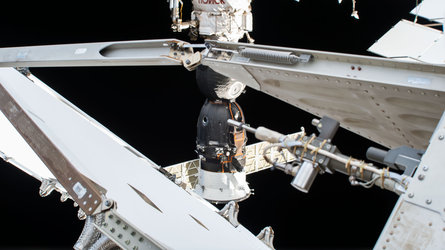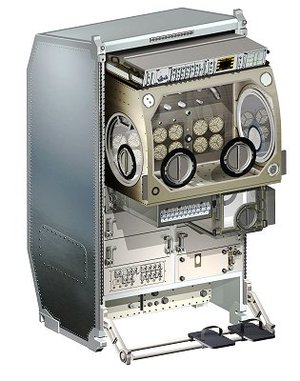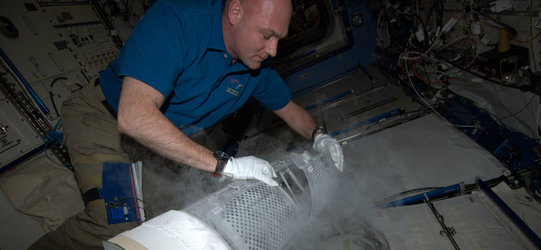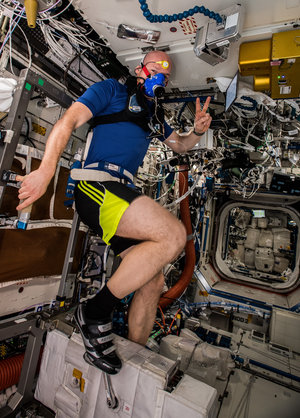Back to the space cradle
Like an infant adjusting to the new world, ESA astronaut Thomas Pesquet is relearning how to move around the weightless environment of space. His cradle is a familiar place though – this is Thomas’s second mission to the International Space Station, the orbiting lab where he broke records for science during his first six months in orbit.
In the same way one never forgets how to ride a bike, Thomas’s cognitive and muscle memory is helping him to adapt much faster this time. And he is already working on some of the 232 experiments he will support during his Alpha mission.
Dexterous science
As babies on Earth, we learn to adjust our grip to the weight and gravitational force of an object. In microgravity, objects have no weight and the inner ear no longer tells us which way is up or down. In two familiar space experiments, Thomas has been reaching for virtual objects. The results will help researchers understand the importance of gravity compared to other senses.

The GRIP experiment studies how long it takes for the nervous system to adjust to the absence of gravity. After setting the experiment up in Europe’s Columbus laboratory, Thomas completed his first science session, holding an object equipped with sensors between his right thumb and index finger.
He moved his arm between two targets with eyes open and shut, and did a series of taps both sitting and in supine postures. Without the signals of gravity to tell Thomas which direction was “up”, how will his brain and body adjust the grip force?


Access the video
Whether gravity is the main driver for movement is also the focus of the GRASP experiment. In a seated posture and also while free floating, Thomas wore a virtual reality headset as he carried out a range of tasks. Researchers are curious to understand how the nervous system integrates information from different senses, such as sight and touch.
Muscle up
Astronauts exercise two hours a day to compensate for the loss of bone and muscle mass from living in weightlessness. To help Thomas break the monotony of daily workout in NASA’s Destiny laboratory, the Immersive Exercise experiment uses virtual reality.
You may have watched videos of real landscapes in your own gym while running on the treadmill. The idea has now made it to space, with a headset that shows Earth landscapes filmed in 360°. Staying fit and sharp will be crucial on longer missions to the Moon and Mars.

Thomas and his crewmate NASA astronaut Megan McArthur performed their first session of the Myotones experiment designed to monitor the tone, stiffness and elasticity of their muscles. A non-invasive, portable device delivers a short pressure pulse on Thomas’s back, shoulders, arms and legs – areas known to be affected by atrophy during extended periods of inactivity. The European astronaut will also take ultrasound and blood tests.
They are two of the 12 astronauts to take part in this experiment that could improve the lives of many people affected by strained muscles with new strategies for rehabilitation treatments as well as people who have been inactive for long periods of time.
Time flies
It feels like yesterday when ESA astronaut Alexander Gerst kicked off the Time experiment during his mission to the Space Station in 2018. This European research that looks into how perception of time seems to change for astronauts living in space, has now been completed.

NASA’s Victor Glover and JAXA’s Soichi Noguchi were the last test subjects to have their reaction times recorded. They used virtual reality to gauge how long a visual target appeared on a screen and measure whether their perception of time speeds up when living in microgravity.
Thomas is making time to bring some bonus science for the researchers of this experiment during his mission. He will conduct his first session this week.
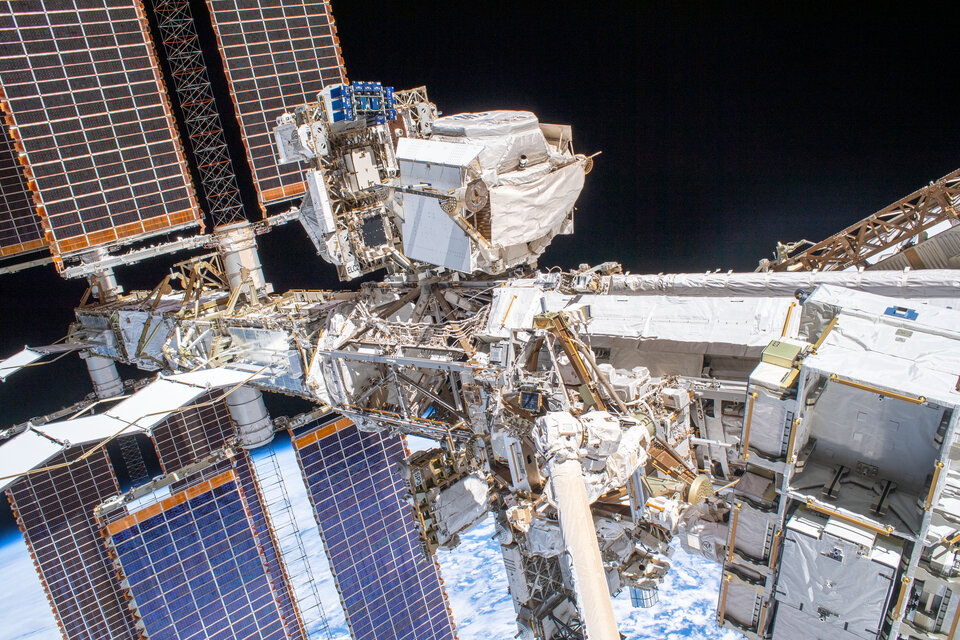
Thomas's stay in space coincides with the 10th anniversary of the Space Station’s largest scientific instrument. It has been a decade since the Alpha Magnetic Spectrometer (AMS-02) began looking for dark matter and antimatter, and measuring cosmic rays. These are high energy particles that travel through space at close to the speed of light.
ESA astronaut Luca Parmitano took part in four spacewalks to repair the cosmic ray detector’s cooling system – a complex task that ensured the cosmic-particle-hunting continues to collect data and provide more groundbreaking science, 10 years and more than 175 billion cosmic rays later.
Feel the heat
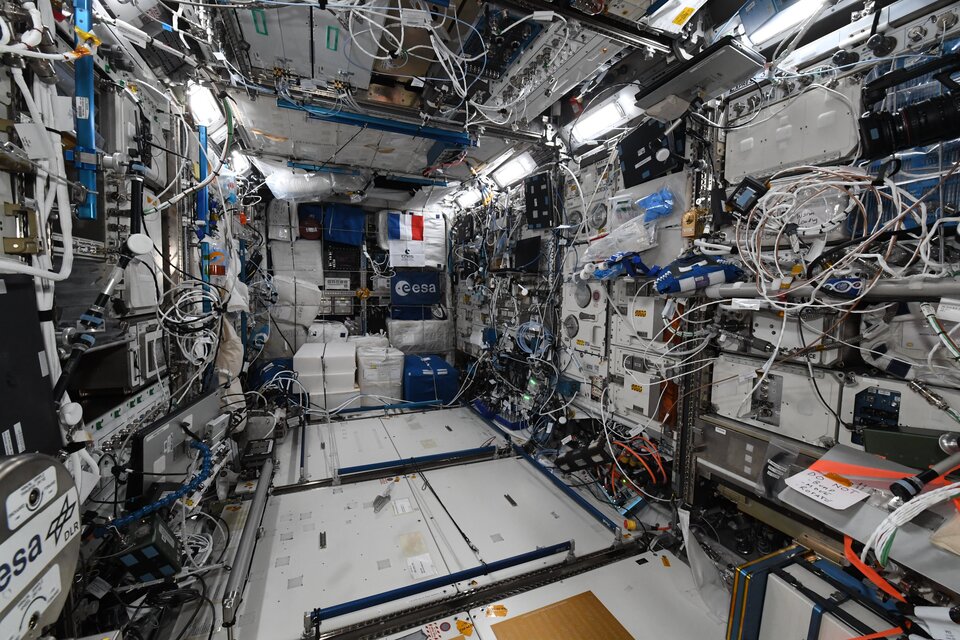
While astronauts slept, the Material Science Laboratory (MSL) kept the heat on for the CETSOL experiment. Europe’s space furnace heated up metals with temperatures as high as 880° C to study microstructures during the solidification of metallic alloys.
Most metals used today are mixtures of different metals, known as alloys. These alloys combine properties to make new materials and are found everywhere from your smartphone to aircraft.
Scientists want to better understand the melting-solidification processes in alloys, and they took organic compounds to the Space Station as analogues for experimentation. The Transparent Alloys experiment, completed last week, observed their formation unaffected by convection.
Results of these experiments will help to optimise industrial casting processes.














 Germany
Germany
 Austria
Austria
 Belgium
Belgium
 Denmark
Denmark
 Spain
Spain
 Estonia
Estonia
 Finland
Finland
 France
France
 Greece
Greece
 Hungary
Hungary
 Ireland
Ireland
 Italy
Italy
 Luxembourg
Luxembourg
 Norway
Norway
 The Netherlands
The Netherlands
 Poland
Poland
 Portugal
Portugal
 Czechia
Czechia
 Romania
Romania
 United Kingdom
United Kingdom
 Slovenia
Slovenia
 Sweden
Sweden
 Switzerland
Switzerland


























